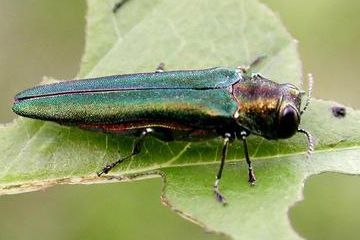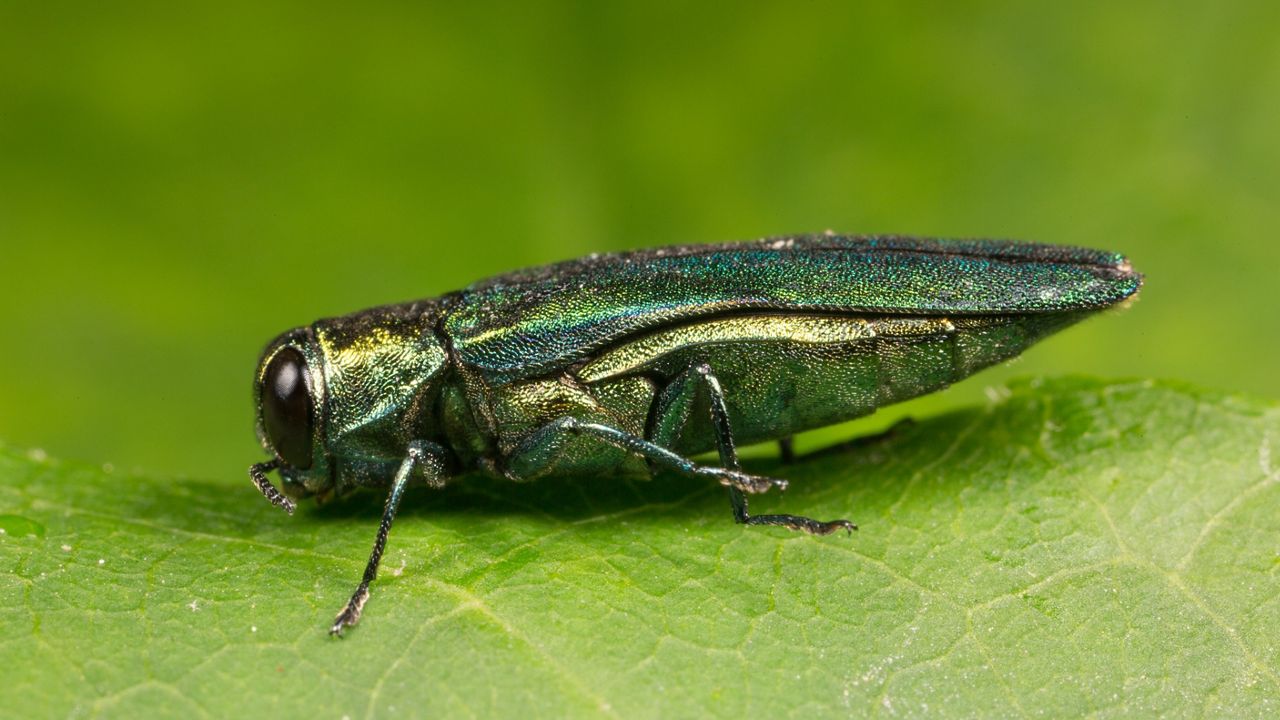The invasive emerald ash borer, a metallic green insect responsible for decimating ash tree populations, continues to spread east in North Carolina, according to state researchers.
The beetle has recently been found in four more counties in North Carolina – Craven, Hertford, Cumberland and Lee – continuing its slow expansion in the east, according to the North Carolina Forest Service.
The emerald ash borer is now found in 71 of North Carolina’s 100 counties.
“These pests were uncovered as part of our routine trapping efforts to keep tabs on the spread of emerald ash borers,” said Jim Moeller, a forest health specialist with the state Forest Service. “We placed traps in seven counties as part of this effort for 2023.”
As the name implies, the invasive pest attacks ash trees. They lay eggs on the bark. When the larvae hatch, they bore into the bark and feed on the tree’s tissue used to transport water and nutrients.

When the emerald ash borer starts laying eggs on an ash tree, the tree will typically die in three to five years, according to the Forest Service. It attacks all four native ash species in North Carolina: white ash, green ash, Carolina ash and pumpkin ash.
The insect is originally from Asia. It was first found near Detroit, Michigan, in 2002. By 2013, the emerald ash borer had spread to North Carolina, according to N.C. State University Cooperative Extension.
The first sightings of the pests in North Carolina were in Granville, Vance and Person counties, north of the Triangle along the Virginia border, according to the Forest Service.
Researchers say the beetle has killed tens of millions of ash trees in the United States since it was first found here.
The emerald ash borer and similar invasive insects are spread by moving infested wood, like firewood, according to the Forest Service. That’s why many parks and campgrounds insist people only use local wood for fires.
Ash trees are planted for urban landscaping and for harvest in North Carolina. Ash wood is strong and durable, according to the Forest Service, and is used to make things like baseball bats and handles for tools.








